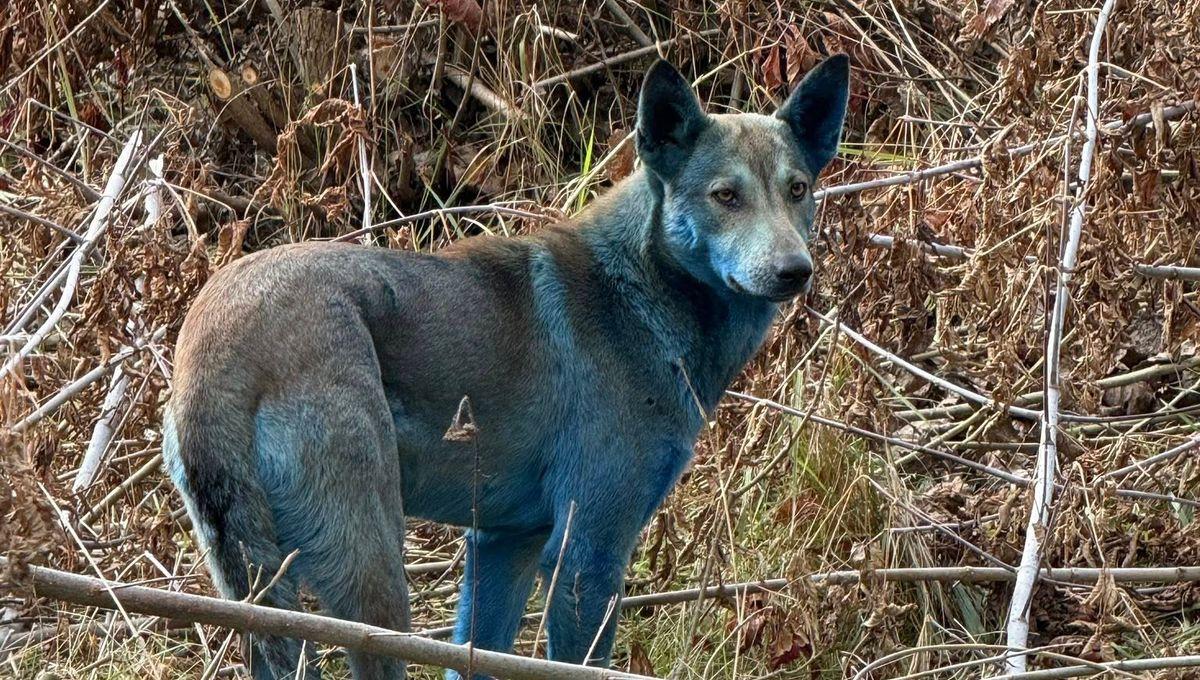Blue Dogs Have Been Spotted In Chernobyl: What Is Going On?

Dogs With Blue Fur Have Been Pictured In Chernobyl: What Is Going On?
Dogs with blue fur have been spotted snooping in the Chernobyl Exclusion Zone, the restricted area surrounding the epicenter of the infamous nuclear disaster. Rest assured, the dogs have not changed color due to any freakish mutation from decades of radiation – the explanation is likely to be far more mundane, if not a little bit gross.
The rest of this article is behind a paywall. Please sign in or subscribe to access the full content. Speaking to IFLScience, researchers from the Dogs of Chernobyl program confirmed that their geotagged images were authentic, noting that at least three blue dogs were documented in the Chernobyl Exclusion Zone on October 6, 2025. After a few failed attempts to catch the tinted dogs, the team eventually found a likely culprit: a nearby porta-potty. “They appear to have been rolling in a substance that had accumulated on their fur. We are suspecting that this substance was from an old portable toilet that was in the same location as the dogs; however, we were unable to positively confirm our suspicions,” Dr Jennifer Betz, Veterinary Medical Director for the Dogs of Chernobyl program, told IFLScience. "We are not in any way saying that it is related to radiation in Chornobyl," she added. So yes, the dogs were most likely rolling around in bright blue chemical fluid that had leaked out of a broken portable toilet. While it might look shocking, the researchers are optimistic that their dye job won’t harm them in the long run. “The dogs appear healthy, as do all of the other dogs that we have encountered during our time in Chornobyl. I would suspect, as long as they don’t lick the majority of the substance off of their fur, it would be mostly harmless,” said Dr Betz. Feelin' blue: another strangely colored hound near Chernobyl. Image courtesy of Clean Futures Fund Funnily enough, this isn’t the first time oddly dyed dogs have been reported in the former Soviet Union. In 2021, residents of Dzerzhinsk, Russia, were shocked to find a pack of bright blue dogs roaming the streets near an abandoned chemical plant. In this instance, it’s suspected that hounds were rolling around in copper sulfate, a pale-blue chemical used in manufacturing. The addition of Chernobyl gives this story a sensational twist, but these blue dogs are not nearly as bizarre as they might first appear. Following the Chernobyl nuclear disaster in April 1986, around 120,000 people from the surrounding area and the nearby city of Pripyat were forced to evacuate. Along with abandoning their homes, many had to leave behind their beloved pets who, against all odds, managed to survive and even thrive in the abandoned lands surrounding the decaying power plant. Dr Betz and a team of experts recently visited the area as part of the Dogs of Chernobyl initiative, a project by the nonprofit Clean Futures Fund that monitors and sterilizes the descendants of those pets left behind. Since 2017, the organization has sterilized more than 1,000 cats and dogs as part of an ongoing effort to keep the semi-feral population in check. The volunteer-led organization was also keen to dispel any suggestions that the blue coloration was caused by temporary markers sometimes used to identify dogs. "During our sterilization campaign, we apply a temporary crayon marker on the top of their head in the color green, red, blue or purple, to identify which dogs we have recently performed surgery on. This washes off in 2 to 3 days. This coloring is only on top of their head and is completely different from the dogs that we encountered that were almost covered head to toe in blue substance," explained Dr Betz. In the absence of meddling humans, many other animal species have been able to thrive in the Chernobyl Exclusion Zone. Studies have shown that the region has strong numbers of wild boar, red foxes, songbirds, and raccoon dogs. Perhaps most remarkable is the resident wolves that appear to have developed protective mutations that increase their odds of surviving cancer. 


